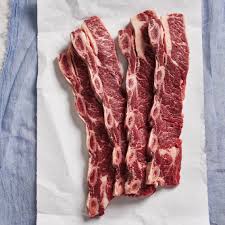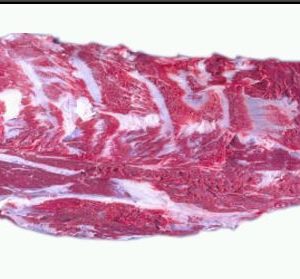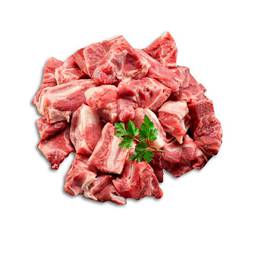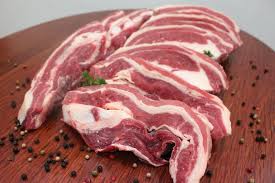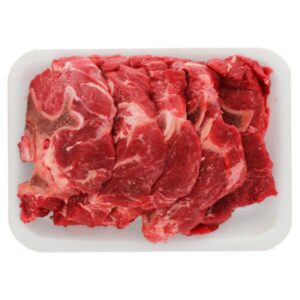Description
All About Short Ribs
Short ribs are a beloved cut of beef known for their rich flavor and tender texture, making them a favorite in various cuisines around the world. Originating from the lower rib area of the cow, short ribs consist of a small section of rib bone and a generous portion of meat, making them perfect for slow cooking. Let’s delve into the characteristics, cooking methods, nutritional benefits, and tips for preparing delicious short ribs.
Characteristics
Short ribs are cut from the rib section of the cow, typically from the 6th to the 12th rib. They are characterized by their meaty, juicy texture and are usually sold in two main styles:
- English Cut: These are cut between the bones, resulting in thick, meaty pieces with a rectangular shape. They are often preferred for braising and slow cooking.
- Flanken Cut: Cut across the bone, flanken short ribs are thinner and include multiple bone segments. This style is commonly used in dishes like Korean barbecue (galbi) and is great for grilling or quick cooking.
Nutritional Benefits
Short ribs are not only delicious but also packed with essential nutrients:
- High-Quality Protein: A great source of protein, which is vital for muscle growth and repair.
- Iron: Important for oxygen transport in the body, iron helps maintain energy levels.
- Zinc: Supports immune function and is crucial for overall health.
- B Vitamins: Provides B12 and other essential vitamins that contribute to energy production and brain health.
Incorporating short ribs into your meals can offer a satisfying way to enjoy these nutritional benefits.
Cooking Methods
Short ribs are best suited for cooking methods that allow them to become tender and flavorful. Here are some popular techniques:
- Braising: One of the most popular methods, braising involves cooking short ribs slowly in a flavorful liquid, such as beef broth, wine, or beer. This method breaks down the tough fibers and results in melt-in-your-mouth meat.
- Grilling: Flanken-cut short ribs can be marinated and grilled for a delicious smoky flavor. Quick cooking over high heat allows the meat to retain its juiciness.
- Slow Cooking: Using a slow cooker allows for hands-off preparation. Season the ribs, add liquid and vegetables, and let them cook low and slow for several hours.
- Oven Roasting: Short ribs can also be roasted in the oven after browning them on the stovetop. This method can create a flavorful crust while keeping the meat tender.
- Pressure Cooking: For a quicker option, pressure cooking short ribs can yield tender results in less time, making it a convenient choice for busy cooks.
Flavor Combinations
Short ribs pair well with a variety of flavors:
- Herbs and Spices: Fresh herbs like thyme, rosemary, and bay leaves enhance the natural flavor of the meat.
- Marinades: A mix of soy sauce, garlic, ginger, and brown sugar works wonders for a deliciously tender result.
- Acidic Ingredients: Ingredients like vinegar, citrus, or tomatoes can balance the richness of the meat and add depth to your dish.
Tips for Perfect Short Ribs
- Choose Quality Meat: Look for well-marbled short ribs to ensure flavor and tenderness.
- Sear Before Cooking: Browning the ribs before braising or slow cooking adds depth of flavor.
- Cook Low and Slow: Patience is key. Cooking short ribs at low temperatures for extended periods results in tender meat.
- Rest After Cooking: Allow the ribs to rest for a few minutes before serving to retain their juices.
Conclusion
Short ribs are a delicious and versatile cut of beef that can elevate any meal. Their rich flavor and tender texture make them perfect for a variety of cooking methods, from braising to grilling. With their nutritional benefits and ability to absorb flavors, short ribs are a fantastic choice for gatherings, comfort food, or any occasion. Embrace the culinary potential of short ribs and enjoy the mouthwatering dishes they can create!

